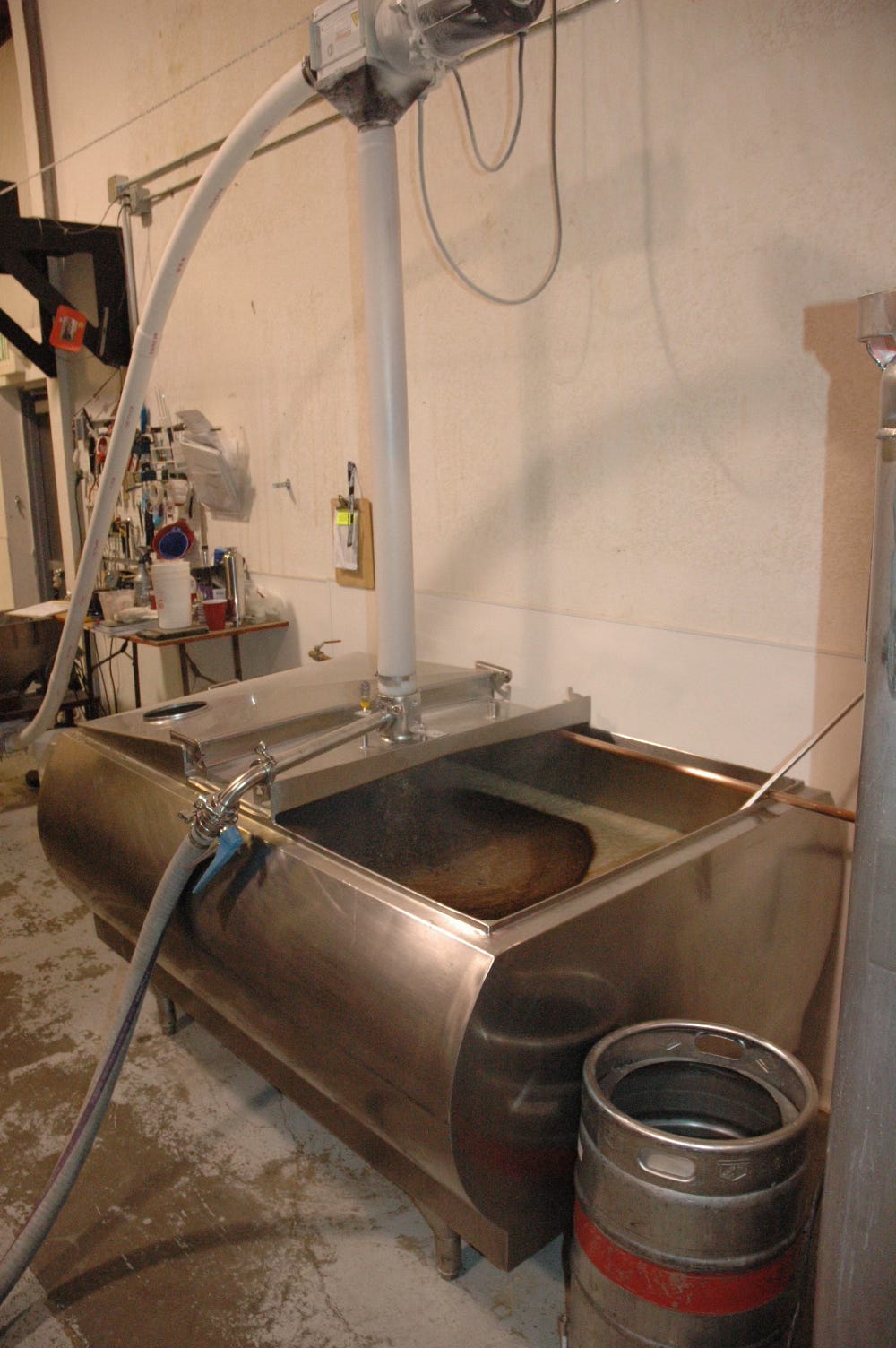Milling: Yes/No?
Another great question this week.
When I was a brewer in a 10 barrel brewpub we had to forego grinding malt due space limitations. We ordered all our malt pre-ground from Briess thru Sysco usually 400-to 900 pounds at a time. Generally it worked well until the owners ran out of money. The beer was great. Only had a couple of times out of 40 batches when an order was slow or incomplete. Believe me it was not my choice to layout a restaurant brewpub this way, the architect and owners felt it was the only way. Is this still a possibility? Any other options? Buy from another brewery? Bob
There are a couple aspects to this question Bob. The first one that comes to mind is space. There is almost always enough space in my opinion. When I started the Colorado Boy Brewery in Ridgway in 2008, I did it on a shoestring - my preferable way - and the brewhouse consisted of 2 fermenters, kettle, mash tun, heat exchanger, pump, grant (made out of a keg) and at the beginning I didn’t even have a hot liq. tank, and instead used the empty fermenter to hold my sparge water. The space was ten ft. by 15 ft.
Eventually I changed out my fermenters to Letina tank fermenters, which have a small foot print and added a hot liq. tank on a platform so I could gravity the water to the mash tun. Prior to this I bought my grain pre-milled, like you. Back then they charged an extra .05 per pound to mill. Now I believe it costs .10.
I had no problem with quality using pre-milled grain. In fact we won quite a few medals at the GABF with this system. However, what I hated was the dust it created when mashing in. Here is a video of me brewing in the early days of Colorado Boy I would have to spend a lot of time cleaning the dust off everything after a brew. Our brewing system is open right to the bar, so all that had to be cleaned too. What a pain.
I figured we had just enough space underneath the hot liquor tank to add a mill. We worked with Tom Bennett of Bennett Forgeworks to invent a rock solid mill, that they now sell. Here is a video I made, and our final product looks exactly like this compared to the sweet one he makes now.
But getting back to space. The problem was the mill was less than 10 ft. from the mash tun. If you buy a flex auger system, they recommend that the rise goes up at no more than a 45 degree angle. We didn’t have space for that of course. So when we installed it, we just took a chance and at the steepest bend as you can see in the video above, it is almost vertical. But it worked! The key was we always started with our 2 row, then specialty grains, followed by 2 row again. That way if there was any left-over grain in the auger, it was 2 row.
I’m assuming that in your brewhouse you can lay it out with enough room so that you can keep your rise in the 45 degree area.
The other part of your question was if going pre-ground, is this still feasible? Yes it is. Would I do it? No. With milling, you will eventually pay for the mill with your grain savings, plus the grain is fresher, but mainly to me, it is a lot cleaner.
So in your budget if you had the $12,000 dollars for a new mash tun and then had to go pre-ground malt, I would instead think about either a used mash tun, or even better a nice dairy tank as a mash tun that costs $1,000. You can make great beer and have a mill and auger system. Here is a good picture of a set up. This is from my good friend Nathaniel Miller of Big Choice Brewing.
Of course you will need a decent grist hydrator as well. Forgeworks sells these as well.
I hope this answers your question. I could go on and on about yield and efficiency, blah blah blah, but hell you are making beer that you are going to sell for $7 a pint that costs you in ingredients less than .40. As Charlie always said, “Relax and have a home-brew.” We are in this business to make money, yes, but also to have fun.
More questions please.








Send me a drawing with dimensions for a second opinion
The run from mill to the far side of the mash tun is 10 ft. It's a squeeze but works great